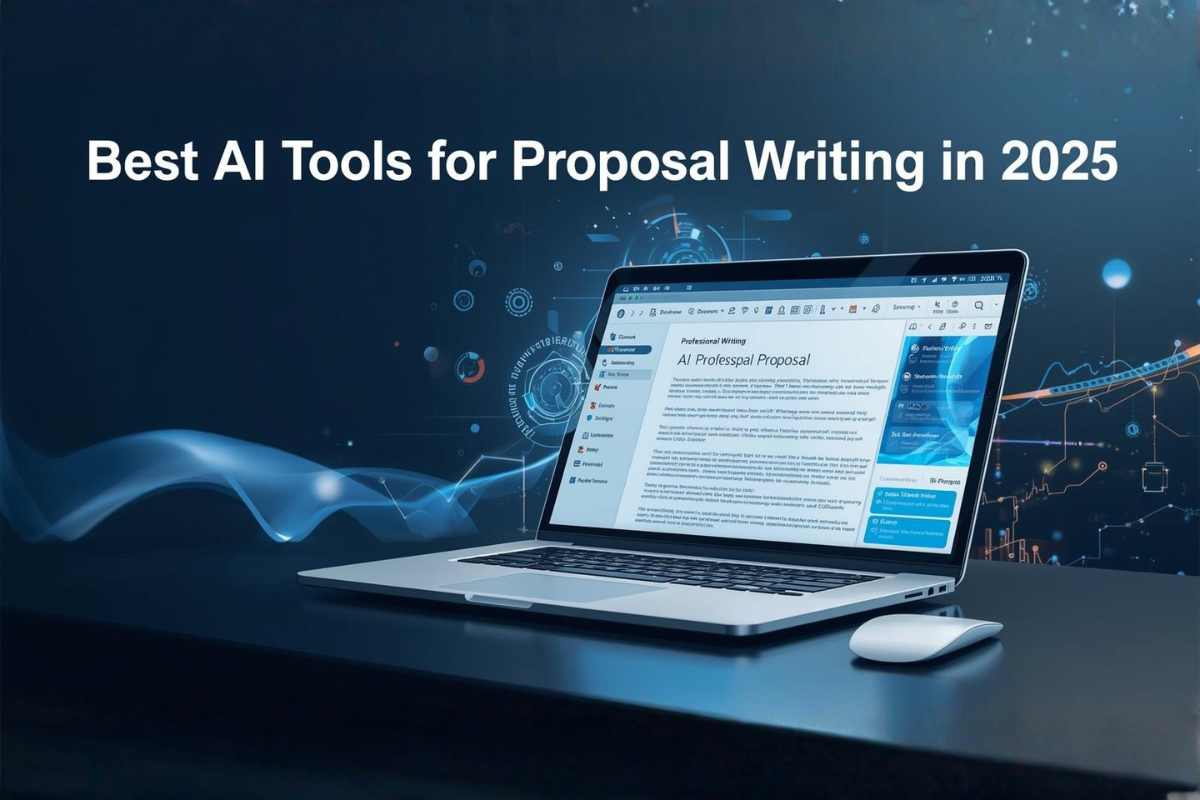Proposal writing is one of those tasks that combines creativity with structure, persuasion with clarity and customization with efficiency. Whether you’re drafting a grant proposal a business proposal a response to an RFP Request for Proposal or any funding request the pressure to deliver something flawless is high.
In 2025 thanks to advances in natural language generation, NLG machine learning writing assistants and cloud based proposal management platforms AI tools have matured to the point where they can meaningfully boost productivity, reduce errors and help you scale your proposal output.
But not all Best AI Tools for Proposal Writing are created equal, some are niche focused on grants or nonprofits, others are general-purpose writing engines and many differ in customization, integration or domain knowledge.
Why AI Tools Are Transforming Proposal Writing
Before jumping into tool names let’s explore why leveraging the best AI tools for proposal writing makes so much sense now and what distinguishes a good tool from a mediocre one.
The Promise:
Automated structuring & outlines AI can instantly generate a skeletal proposal based on keywords or project descriptions reducing blank page paralysis.Drafting core sections: From project background to methodology AI can supply a first-pass draft you can refine. Research & data synthesis Good models can scour past Best AI Tools for Proposal Writing case studies and public domain data to feed your narrative. Editing proofreading & tone consistency Grammar readability coherence AI helps maintain a consistent voice. Template & formatting automation Some platforms generate polished layouts auto numbering section toggles and branding integrations fonts logos colors.
Tracking & analytics In proposal management platforms AI helps monitor opens time spent per section and follow-up prompts.
What Makes a Proposal AI Tool Best?
When evaluating the best AI tools for proposal writing look for these hallmarks:
Domain specialization
Tools built for grant writing RFPs or government contracts often embed domain specific heuristics and winning language. For example Grantboost is tailored for nonprofits.
Template & customization libraries
A robust template library with flexibility e.g. remove sections and reorder custom fields is essential.
Seamless integrations
Integration with CRMs cloud storage Google Drive Dropbox Best AI Tools for Proposal Writing tools Slack Microsoft Teams even e signature or payment modules.
Human-in-the-loop editing
AI should allow you to override, refine and personalize not be a black box.
Tracking & analytics
Insight into how reviewers interact with your Best AI Tools for Proposal Writing, which pages they linger on whether they scroll etc. helps you refine future proposals.
Security compliance & versioning
For high stakes proposals features such as version control audit logs encryption and permission management matter.
Scalability & team collaboration
Multi user support role based access real time editing notifications.
Cost & ROI balance
Some tools charge per word, others per seat or per proposal.The best tool in India or Australia may differ depending on budget constraints, currency and local demand.
Top AI Tools for Proposal Writing in 2025
Below is a curated list of standout tools categorized by use case.These are among the best AI writing tools for proposal writing and many have features that cover business proposals grants or RFPs.
| Tool | Strengths / Use Cases | Considerations / Limitations |
| Grantboost | Specifically built for grant proposals includes funding databases narrative drafting compliance checks. grantboost.io | Heavier focus on grants less ideal for general business proposals. |
| Proposify | Best AI Tools for Proposal Writing Generator brand-consistent templates + editing + tracking. proposify.com | Better suited for agencies or sales teams than academic grants. |
| XaitPorter | Best AI Tools for Proposal Writing collaboration version control compliance support. xait.com | More enterprise-level may be overkill for freelancers or small projects. |
| Better Proposals (Proposal AI) | AI + formatting + sending + client analytics.Better Proposals | Less deep in domain heuristics grants funding but good for business pitches. |
| AutogenAI | AI-powered drafting solutions for proposals developed by proposal experts. AutogenAI | Newer tools check reliability community experience. |
| Writesonic and similar AI writing tools | Strong in content generation templates crossover for many contexts including India 🇮🇳 & Australia 🇦🇺 | Less niche intelligence in proposals vs dedicated platforms. All About AI |
Choosing the Right Tool: Strategy by Scenario
Scenario A:You write a mix of business proposals agency pitches and RFPs
You need a general-purpose AI + Best AI Tools for Proposal Writing combo. Proposify, Better Proposals or AutogenAI might be great choices; they let you manage branding analytics and team collaboration. Use a base AI writing engine e.g. GPTbased service for content then drop it into a proposal platform for format + tracking.
Scenario B: You specialize in grants nonprofit funding
Choose domain-specialized tools like Grantboost or grant-centric modules of Best AI Tools for Proposal Writing if available. These tools often embed compliance rules, funding sources and evaluation frameworks. Combine with a strong writing assistant for polishing.
Scenario C: You work in regulated or government-heavy sectors
Then enterprise-level tools like XaitPorter shine because they provide audit logs, role-based permissions encryption and compliance modules.Use Best AI Tools for Proposal Writing drafting but never skip human review especially for sensitive proposals.
Scenario D: You’re on a small budget in India Australia
You may prefer leaner AI-first Best AI Tools for Proposal Writing Writesonic Jasper etc. that support local market idioms and prices. Use them for drafting and pair them with template platforms, even Word + design templates. Many AI writing tools have regional support or localized models.
How to Use These Tools Effectively Gaps Many Don’t Cover
Simply having a tool doesn’t guarantee success. Many top articles gloss over how to operate Best AI Tools for Proposal Writing. Here’s how to get the most:
Build and reuse a Proposal Prompt Library
Create templates for each section executive summary methodology risk analysis.Save prompts with variables. This speeds section by section generation.
Iterative refinement not one shot dumps
Generate section-by-section (don’t ask AI to produce the entire proposal in one go). Prompt Draft a methodology for solar-powered community project in rural Punjab 300 words include timeline Then refine Best AI Tools for Proposal Writing
Integrate your domain data
Feed AI your past proposals project data case successes. Use contextual memory so AI outputs reflect your strengths not generic fluff.
Human-in-the-loop & oversight
Always fact-check tune tone to ensure coherence. Many proposals fail not because of grammar but because they miss subtle alignment to client goals.
Peer review + external critique
Use AI for suggestion but a domain expert (or stakeholder) should validate logic, budget, assumptions.
Track performance & feedback loops
Use analytics (if your tool offers them) which sections viewers linger on where drop-off happens. Use A/B tests (e.g. different executive summary phrasing). Over time refine your prompt library.
Consider localization and compliance
If Best AI Tools for Proposal Writing in India or Australia ensure your tool or your prompt library adjusts to local regulatory legal taxation norms, tender formats or language idioms.
Hybrid human + AI collaboration
Let AI draft but humans inject storytelling domain insights into client empathy. The best proposals feel like they came from a human, polished by AI.
Security hygiene
Don’t feed proprietary or sensitive content to public models unless encryption or private instance (enterprise plan) is assured.
Case Study: How an NGO Increased Success Rate by 35%
(Fictitious but illustrative based on general industry patterns)
An NGO in Bengaluru was submitting 20 grant proposals per year, achieving funding in 6. By switching to Grantboost integrating their existing proposal archives, and using a prompt library, they:
- Cut drafting time by 60%
- Increased consistency of structure and compliance
- Freed staff to perform more strategic domain analysis
- Over two funding cycles, increased success rate to 8/20 (a 35% boost)
- Improved feedback loops by tracking reviewers’ comments in the platform
They still had domain experts vet each proposal, but AI handled heavy drafting formatting and version control. The key: they treated AI as an amplifier not replacement.
Trends & What Competitor Articles Often Miss
- Multimodal inputs & outputs: Some of the newest proposals platforms are integrating image generation (diagrams, infographics), tables charts directly from prompts.
- Custom model fine-tuning: Advanced users can fine-tune AI models on their past proposals to reflect brand voice and technical style.
- Cited / referenced outputs: Emerging tools attempt to supply sources or references (especially for academic or grant proposals).
- Interactive proposal elements: Some platforms allow embedded prototypes, interactive budgets calculators and live pricing toggles.
- Cross-market models: Tools that support localized variants (e.g. best ai writing tools for proposal writing in India or in Australia) to capture regional vocabulary regulation pricing nuance.
- Ethics, AI governance & EEAT: As AI use rises, adding transparency (This draft was AI-assisted”) and provenance (which sections are human-edited) increasingly matter for trust. Washington Technology notes that success comes by blending AI efficiency with human expertise. Washington Technology
Best AI Tools for Proposal Writing articles give a tool list pros/cons, but stop short of showing how to integrate AI into your repeated workflows, how to localize or how to systematically improve proposals via feedback loops. This piece bridges those gaps.
Local Angle: India & Australia
When you search best ai writing tools for proposal writing in India or in Australia you want to factor:
- Regional pricing & currency support
A tool priced in USD may be expensive when converted to INR or AUD. Look for subscription tiers or regional discounts. - Localization of vocabulary and regulatory compliance
For Indian tenders, generic “government funding” language may differ. Use region-specific prompts or domain-specific modules. - Support & community presence
A tool with local support, documentation, and user community (India, Australia) helps overcome onboarding friction. - Integration with local payments and e-sign
Tools that allow e-signatures recognized in Australia or India (e.g. Aadhaar-based digital signature or DocuSign) add local practicality.
Some general-purpose AI writing tools (e.g. Writesonic) are used globally and support Indian or Australian clients, but they lack proposal domain depth. That’s why a hybrid approach (writing engine + proposal platform) often works best.
Summary & Next Steps
By now you should have:
- A clear sense of why AI is transformative for proposal writing
- Criteria to judge the best AI tools for proposal writing
- A refined shortlist of top tools (Grantboost, Proposify, XaitPorter, Better Proposals, AutogenAI, Writesonic)
- Strategies to use them well (prompt library, human oversight, feedback loops)
- Insight into trends, local considerations (India, Australia), and how to go deeper
If I were recommending one starting point: pick your primary domain (grant / business / agency), try two tools free/demos and commit to building a prompt library and feedback loop across three proposals. Over time AI becomes a trusted co-pilot not a crutch.
Final Thoughts
In 2025, the landscape of Best AI Tools for Proposal Writing has evolved from a manual, time-intensive process to a smart AI-assisted workflow that saves time and improves quality. The best AI tools for proposal writing are no longer limited to generating words they now understand context, structure, and intent helping professionals create persuasive, polished, and customized proposals in a fraction of the time.
From platforms like Grantboost for grant proposals to Proposify XaitPorter and Better Best AI Tools for Proposal Writing for business and RFP writing, each tool offers unique strengths depending on your goals, budget, and industry. Whether you’re an NGO in India, a marketing agency in Australia, or a global enterprise managing RFPs, the right AI assistant can streamline collaboration, ensure compliance, and increase win rates.
But remember the AI advantage works best when paired with human insight, domain expertise, and storytelling. Use AI to draft and structure, but let your experience and empathy give the proposal its persuasive edge. In short: AI writes fast, but humans make it win.
FAQs
What are the best AI tools for proposal writing in 2025?
Top tools include Grantboost, Proposify, XaitPorter, Better Proposals, AutogenAI, and Writesonic each excelling in different proposal types.
Can AI tools write a complete proposal on their own?
AI can create strong drafts and structure but human review is vital for accuracy, compliance, and persuasive storytelling.
Are AI writing tools reliable for grant and RFP proposals?
Yes specialized tools like Grantboost and XaitPorter offer compliance features and domain-specific templates for grants and government RFPs.
Which AI proposal tools work best for India or Australia?
Writesoni, Better Proposals, and Proposify are great picks thanks to local pricing, support, and integration with regional formats and e-sign systems.
How do AI tools improve proposal success rates?
They cut drafting time, ensure structure consistency, reduce errors, and analyze client engagement helping you refine and win more proposals.
Is data safe when using AI for proposal writing?
Choose tools offering cloud security encryption and private environments. Avoid sharing confidential client data with public AI models.


